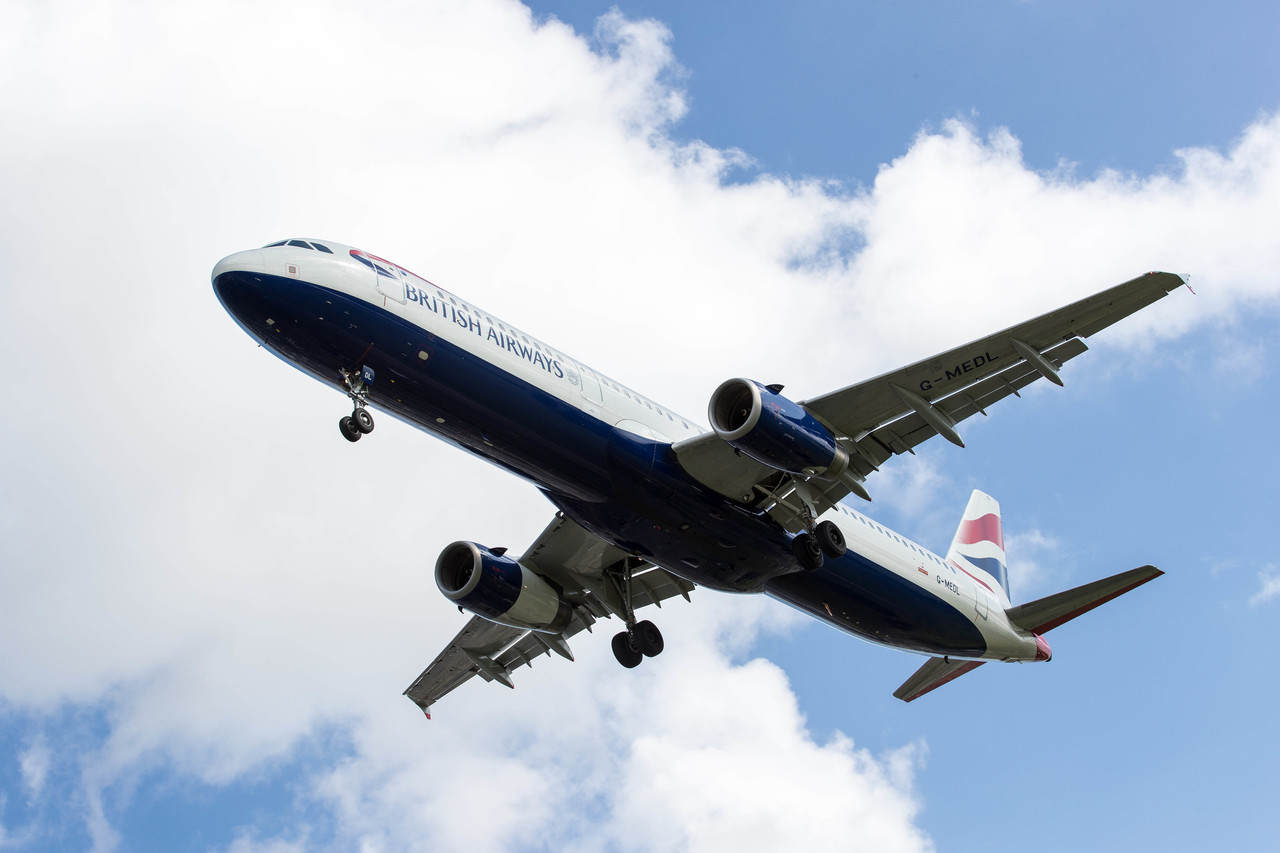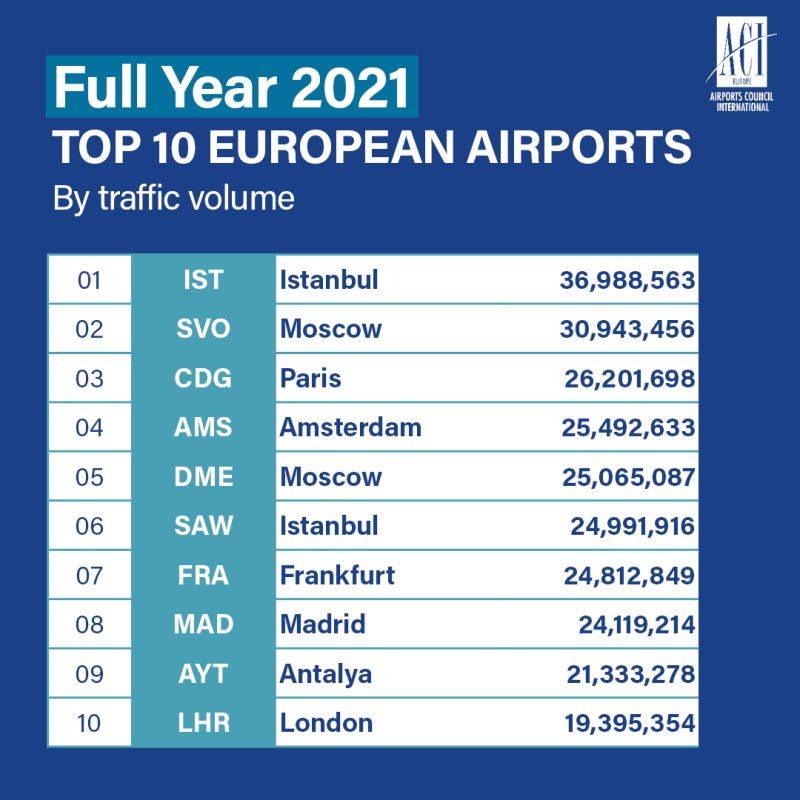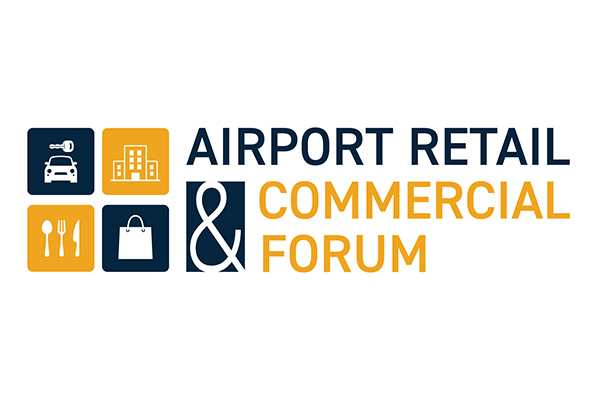EUROPE. Airports Council International (ACI) Europe has released passenger traffic figures which show that European airport traffic increased by +37% in 2021, compared to 2020. However, the annual result was still -59% below pre-pandemic 2019 levels.
The numbers come from the ACI Full Year 2021 & December 2021 traffic report, which highlights the impact of the COVID-19 pandemic on the airport industry.
ACI Europe noted that the Delta variant of COVID-19 was the prime factor in knocking down passenger traffic in the first half of 2021 (-77.7% against 2019), as lockdowns and severe travel restrictions were reintroduced and most intercontinental markets remained out of reach.

The trade body said that rollout of the vaccines combined with EU Digital Covid Certificates and the reopening of the transatlantic market in November saw passenger traffic improving in the second half of the year (-42.4% against 2019). ACI Europe added though, that the Omicron COVID-19 variant broke that dynamic in December.
“For now, the impact of Omicron is still very much on us as airlines keep pulling out flights and capacity in response to weakened demand in what is already traditionally a low season” – ACI Europe Director General Olivier Jankovec
While passenger traffic had been improving between June (-66.3%) and November (-35.2%) compared to 2019 levels, the December result went into reverse with traffic levels at -39.2%.
This Omicron impact was focused on the EU+ market (EU/EEA, UK and Switzerland), where airports saw passenger traffic falling by -44.1% in December compared to -38.1% in November. Conversely, ACI Europe noted, the variant did not prevent modest gains in the rest of Europe (-17.1% in December compared to -19% in November).
ACI Europe Director General Olivier Jankovec said: “After losing 1.72 billion passengers in 2020, we all had high hopes for a strong recovery in 2021. But last year proved another difficult one, as Europe’s airports ended up losing another 1.4 billion passengers compared to 2019. This means they remain under considerable stress, with systemic financial weakness across our industry.

“The knee-jerk reaction of many governments who ignored the ECDC guidance and rushed to reimpose travel bans and other restrictions – including for intra-European travel – has stalled our recovery. Yet, these travel restrictions did nothing to stop the spread of Omicron, as recognised just last week by the WHO and also evidenced by a recent Oxera & Edge Health report looking at the situation in the UK.”
European air traffic markets analysis
According to ACI Europe, in 2021 airports in the EU+ market saw passenger traffic increasing by +29.2% compared to the previous year, but still remained at -64.6% against pre-pandemic (2019) levels. Compared to 2019, the strongest yearly results came from airports in Greece (-46.8%), Romania (-52,7%), Luxembourg (-53.9%), Cyprus (-55.6%), Bulgaria (-55.9%), Spain (-56.4%) and Portugal (-57.9%).
At the other end of the spectrum, airports in Finland (-80.5%), the UK (-78.1%), the Czech Republic (-74.8%) and Ireland (-74.4%) suffered the largest losses in passenger traffic. ACI Europe noted this is mainly a reflection of severe restrictions on travel imposed by these countries. Meanwhile, airports in the rest of Europe significantly outperformed the European average, with passenger traffic increasing by +59.4% in 2021 compared to the previous year and remaining at just -34.4% compared to 2019 levels.

ACI Europe observed that this resulted from generally less severe travel restrictions and lockdowns. Compared to 2019, the best results were posted by airports in Russia (-24.4%) and Armenia (-29.3%). During Q4 2020 and Q1 2021, the five busiest European airports were all located in Turkey and Russia.

For the full year 2021, Istanbul (-46% compared to 2019) was the busiest European airport, followed by Moscow-Sheremetyevo (-38%). Paris-Charles de Gaulle (-65.6%) and Amsterdam-Schiphol (-64.4%) occupied third and fourth places, followed by Moscow-Domodedovo (-11.3%).
ACI Europe also highlighted that smaller regional European airports have been recovering at a faster pace since last Summer compared to their larger counterparts. The trade body said this reflects the fact that beyond the transatlantic market, many intercontinental markets remain de facto closed due to severe travel restrictions and that the recovery remains largely driven by leisure and VFR (Visiting Friends and Relatives) travel in intra-European and domestic markets.

Jankovec gave his view on what lies ahead for European aviation: “Uncertainties as to the evolution of the pandemic remain significant and limit visibility beyond a few months, at best. For now, the impact of Omicron is still very much on us as airlines keep pulling out flights and capacity in response to weakened demand in what is already traditionally a low season.
“This means the first quarter will be disappointing, but that we should hopefully see traffic take a better turn as Spring approaches. Whether this happens earlier depends on the pace at which travel restrictions can be lifted, now that Omicron is prevalent. A number of countries are moving in that direction, but much more needs to be done.“Today’s planned adoption by the EU of an updated recommendation for intra-European travel should in principle confirm that travel regimes will at long last be based on traveller’s health status rather than their provenance. However, this will be meaningless unless governments finally adhere to the plan and effectively coordinate.”












